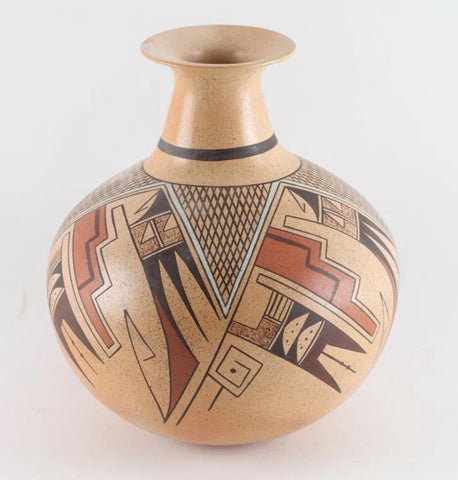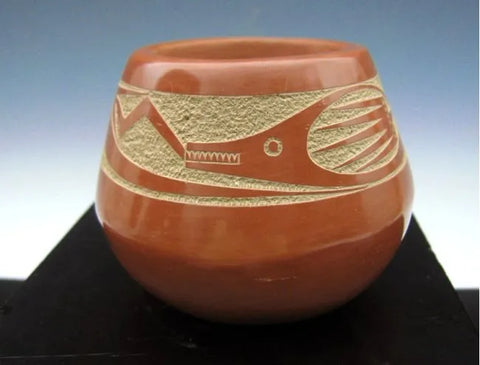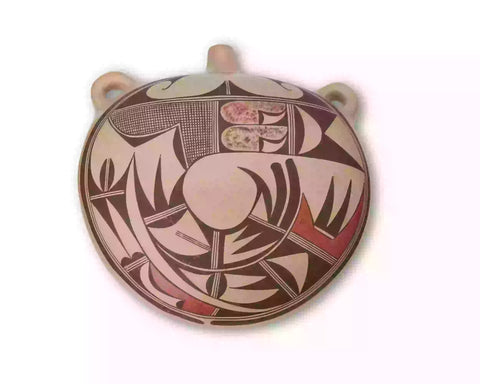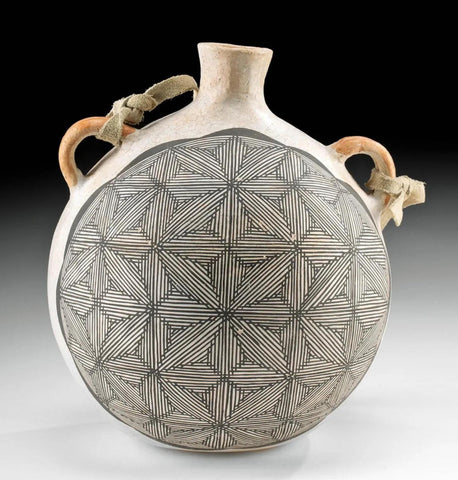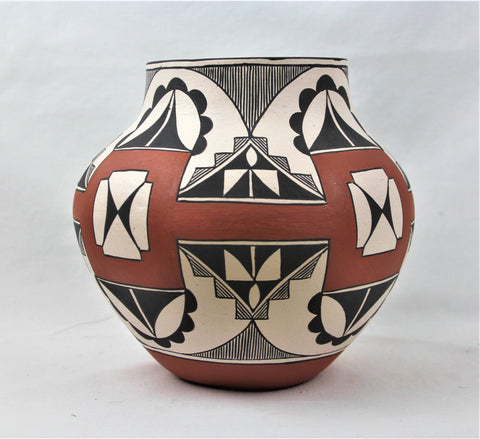Native American Indian Pottery
Browse:
All items
#1073
#1107
#1114
#1118
#1122
#1124
#1129
#1141
#1150
#1156
#1157
#1158
#1159
#1178
#1185
#1188
#1189
#1193
#1194
#1196
#1197
#1204
#1205
#1208
#1209
#1216
#1228
#1232
#1271
#1277
#1284
#1307
#186
#967
#971
10
1021
1027
1067
1069
108
109
1100_ad
112
115
118
120
121
1218
123
124
1246
127
129
13
133
137
138
15
150
175
18
181
183
184
185
1860-1942
1880's
189
1890's
1890_Acoma_Jar
192
1930
1930s
1950
1960
1970
1970's
1972
1976
1980
1991
202
203
205
208
20th century
20th_century_Zia_pot
210
211
212
216
219
230
232
235
236
238
239
249
250
252
254
258
261
263
269
271
272
283
284
285
292
298
305
311
321
326
327
35
37
386
387
389
39
393a
393b
4
40
41
432
435
458
460
461
47
472
475
494
497
52
521
57
59
63
664
665
666
679
68 b
680
69
72
73
74
752
757
76
77
78
79
8
80
814
816
819b
819c
849
858
879
881
888
889
9
931
937
941
943
944
946
947
952
953
960
973
986
Acoma
Acoma double lobed canteen
Acoma Olla
Acoma Poly Chrome
Acoma poly chrome canteen
acoma polychrome
Acoma pottery
acoma pottery bowl
Acoma pottery canteen
acoma pottery jar
Acoma Sky City
Acoma_historical_jar
Acoma_jar
acoma_native
acoma_NM
acoma_parrot_design
Acoma_polychrome
acoma_polychrome_pot
acoma_pot
acoma_pottery
acoma_pottery_native
Acoma_Pueblo
acoma_pueblo_art
Acoma_Pueblo_Pottery
acoma_vessel
acoma_wed_pottery
Acoma_wedding_jar
Acoma_wedding_pot
Ad 1000 to 1200
Adelle_Nampeyo
Agnes_Nahsonhoya
Alabama
alpine Ca
Alvina_Garcia
Amereicna 1948-2012
american_indian
american_Indian_art
american_indian_bowl
american_indian_pot
american_indian_zuni
american_indians
american_pottery
anasazi
anasazi_history
anasazi_pottery
Anaszai
and Necklaces
Anderson Peynestsa
Anderson Peynetsa
Ann_Morris
Anna_Marie_Lovato
antique
antique_canteen
antique_pottery
art
art_hopi
art_native
art_native_american
Artist
arts
authenic
authentic
avian_figures
avian_form
avian_motif
ayanyu_serpent
Barbara Polacca
BD_Garcia
Beautiful
Beetle Design
bird
Bird Design
bird_design
bird_designs
bird_motif
bird_pottery
birds
birds_and_flowers
BL_Cerno
black
Black on Red
Black red and white
Black Water pitcher
Black-on-White
black_an_dwhite
black_and_white
black_and_white_pott
black_on_black
Black_on_white
black_on_white_pott
black_pottery
black_ware
black_white
black_white_and_rust
Blackware
blackware_native
blackware_pottery
Blak on red
blossom_motifs
Blue_Corn
Blue_Smokes
Bluff Utah
bowl
bowl.
bowl_native
bowl_pottery
bowls
brown_and_white
bulbous_shape
butterfly
by D.H.Sanchez
by Acclaimed
by Acclaimed Artist
by Adelle Nampayo
by Barbara and Richard Cerno
by danny goodman
by Eunice Navasie Fawn
by Grace Monahan
by howard noranjo
by Jean Sahme
by Joy Navasie
by Marianne Navasie
by phyllis johnson
by Priscilla Namingha Nampeyo
by Robert Tenerio
by Sylvia Haha
c 1910
Ca 1000-1600
Ca 1060's
Ca 1900's
Ca 1900's-20's
Ca 1910
Ca 192's-30's
Ca 1920's
ca 1930-194
Ca 1940's
Ca 1950's-1970's
ca 1960's
ca 1968
Ca 1970
ca 1970's
ca 1977
Ca 1978
Ca 1980's
Ca 2017
Ca AD 700-1660
Ca early 1900's
Ca;sas Grandes
ca_1900
Ca_1950
Cactus fruit effigy
Candelaria_Gachupin
candlestick
candlestick_black
Canteen
canteen_hopi
canteens
Carmencita
carved
carved_design
carved_pottery
carved_pottery_art
carved_red_ware
Cecelia
centiped bowl
ceramic
ceramic_jar
ceramics
ceramics_and_pottery
chakoptwa
Chapel_Hill
charles_lamb
checker_board_design
circa 1900-1930
circa 1960s
circa early 1900s
Classic
classic maricopa pot
Classic__Zia_pottery
classic_polychrome
Claudina_Lomakema
Claudine_Haloo
Clay
clay pot
clay pottery
Cochite art
Cochite canteen
Cochite pottery
Cochiti
coil_method
coilded blackware
collectible_pottery
Collectibles
Concepcion_Faustine
contemporary_design
Cooking Olla
cooking pot
Cornelia_J_Shije
cornstalk_design
Corrugated
cream
curiosity 5
curiosity 6
D_Tosa
Dee Setalla
deer_designs
deer_frieze
deer_house
Deguieno canteen
Delores_Namoki
Design
design bowl
Dick Jamison
Diegueno
Diegueno pottery bowl
Dolores Juanico
Dolores_Lewis
Donald_Chinana
double_neck
dough
Dough_Bowl
dough_bowls
E_Concho
eagle_tail_patten
Earl_Morris
Earlene_Tafoya
Early_1900s_Zia_pot
Edith Nash
Edith Nash Bowl
Edith Nash Bowls
Edith Nash Pottery
Edwina_Tortalita
Elmer_Gates
Emma_Chino
Emma_Lewis
Emma_Naha
Ethel_Groverk
Ethel_Youvella
excelent_condition
Excellent
excellent_acoma_pot
excellent_condition
Excelloent
Exceptional
exquisit_design
Exqusite
extremely_fine
fabulous
fair_condition
famous potter
feather_design
feather_hallmark
feather_pattern
Feather_Woman
feather_woman_jar
Feather_woman_olla
Feather_woman_pot
figures
Fine
fine_condition
fine_line
fine_polychrome
fire_clouds
fish_and_deer
Florence_Marengo
flowers
FMWaconda
Four_Color
four_red_birds
Frieze_band
frog
Frog Woman
frog_and_avian_forms
geometric
geometric posttery
geometric_bowl
geometric_design
geometric_designs
geometric_fish
geometric_leaf_forms
geometric_pattern
geometric_reserves
geometrics
glaze_ware
globular
globular_form
good_condiition
good_condition
Grace_Navasie
great_condition
hand made plain ware
hand made pot
hand made pottery
Hand Painted
hand painted porttery
hand painted pot
hand painted pottery
hand painted traditional birds
hand_made
hand_made_pottery
handmade
handmade pot
handmade pottery
handmade_pottery
Hano
Harman
Heart Line deer design
Helen_naha
Helen_Naha_jar
Helen_Naha_pot
Histoic
historic
Historic canteen
Historic Cochite
Historic Cochite art
historic maricopa
Historic markings
historic pottery
historic_acoma_pot
Historical_Acoma_Pot
Hopi
Hopi art
Hopi bowls
Hopi canteen
hopi designed bowls
Hopi Frog Woman
Hopi Joy Navasie
Hopi Name
Hopi Poly Chrome
Hopi Poly Chrome Pottery
Hopi Polychrome
Hopi Polychrome pot
Hopi pots
Hopi pottery
Hopi Pottery Bowl
Hopi pottery bowls
Hopi Pottery Canteen
hopi pottery jar
Hopi pottery tile
hopi_art
hopi_bowl
hopi_bowl_pottery
hopi_bowls
Hopi_Design
hopi_handmade
hopi_indian
hopi_jar
hopi_native_art
Hopi_polychrome
hopi_pottery
hopi_pottery_bowl
hopi_pottery_design
hopi_pottery_jar
hopi_pottery_jars
Horn_Toads
human_figures
I_Chino
Ida Redbird
ida_redbird
Ildefonso
indain_pottery
indian
indian_bowl
indian_carved_pot
indian_native
indian_pottery
internal designs
intricate designs
Isleta_pottery
Isletsa_Pueblo
IW_Laguna
J_Navasie
James_G_Nampeyo
Jar
jar_pottery
Jars
Jason Ebelacker
Jemez
Jemez poly chrome
Jemez pottery
Jemez_jar
Jemez_pot
Jemez_Pottery
Jesie_Garcia
Jessie Gacia Pottery Canteen
Jessie Garcia
Jessie Garcia art
Jessie Garcia canteen
Jessie Garcia pottery
Jo_Toya
Joy Navasie Artist
Joy Navasie Frog Woman
Joy Navasie hopi
Joy Navasie Pottery
Kathy_Pino
Kokopelles
kokopelli
Kokopelli_figures
kokopelli_pottery
ladle
ladles
large
large maricopa pot
large_pottery
late 19th
laura Tomosie
Lis_M
lizard
Lizard_Pot
lizard_pottery
loretta Garcia
lucy lewis
Lucy_Lewis
Lucy_M_Lewis
Lucy_R_Jojola
Lula Young
M_Toya
Maize symbol
Maria_and_Julian
Mariarch_of_Acoma
Maricopa
maricopa art
maricopa bowl
Maricopa bowls
maricopa pot
Maricopa pottery
maricopa pottery vase
Maricopa vase
Maricopa_pottery
Marie_and_Julian
Mary Juan art
Mary Juan pot
Mary Juan Potter
Mary_Small
Maxine toya
Maynard_Navasie
McKelvey
McKelvey_Sisters
Michael Hawley
Michael Hawley-Chakoptewa
Mickey
migration_pattern
Mimbres
minature
miniature_seed_pot
Minnie_Vigil
mint_condition
miranda Leno
Mohave
Mohave clay art
Mohave clay effigies
Mohave clay effigy
Mohave clay figures
Mohave effigies
Mohave Indian
Mohave Indian art
Mohave Pottery
mojave
Nampeyo
Nampyo
Nathaniel Vallo
Nathaniel Vallo potter
native
Native American
Native American Indian
Native american pot
Native Americanpottery
Native Amerrican
native amrican
native_acoma_pot
native_acoma_wedding
Native_Amerian
native_american
Native_american_art
native_american_bowl
native_american_cant
native_american_jar
Native_American_Olla
native_american_pot
native_american_pott
native_american_wed
native_americans
native_art
native_blackware
native_bowl
native_bowl_pottery
native_bowls
native_canteen
native_clay
native_indian
native_jar
native_pot
native_pottery
native_pottery_art
native_pottery_bowl
native_pottery_bowls
native_pottery_hopi
native_pottery_jar
native_pottery_zia
native_vase
native_vases
native_wedding
native_wedding_vase
Navajo
NC
near_excellent
New Mexico
New_Mexico
New_Mexico_87052
New_Orleans
nice_patina
NME_Peters
Old
Old Santo Domingo
old_acoma_pottery
old_Polychrome
old_pueblo_pottery
Olla
orange
Ornamentaion
Ortiz
Outstanding
Palmer
Papago
pigments of various colors
pigments of various colors. Ca 1920's
pitcher
plain ware
plain_ware
plychrome
plyl chrome bowl
Polacca AZ pottery
Poly chrom
Poly Chrome
Poly chrome canteen
Poly chrome pottery
polychorme
Polychrom
Polychrome
Polychrome bowl
polychrome canteen
polychrome pottery
Polychrome_and_birds
polychrome_design
polychrome_jar
polychrome_on_buff
Polychrome_on_white
polychrome_pot
polychrome_pottery
polychrome_with_bird
Polycrome
Popago
Popago Pottery Olla.
pot
pot_pottery
pot_seed
pots
Potter_Helen_Naha
pottery
Pottery Bowlk
Pottery Bow.
pottery bowl
Pottery Bowls
Pottery Canteen
Pottery Effigy
pottery from acoma
Pottery Jar
Pottery Olla
pottery pot
pottery vase
pottery_acoma
pottery_american_ind
pottery_anasazi
pottery_and_ceramics
pottery_antique
pottery_antiques
pottery_art
pottery_bowl
pottery_bowls
pottery_carved
pottery_clay
pottery_handmade
pottery_hopi
pottery_hopi_art
pottery_indian
pottery_jar
pottery_jars
pottery_large
pottery_native
pottery_native_art
pottery_natives
pottery_pot
pottery_pueblo
pottery_redware
pottery_Santa_Clara
pottery_south_west
pottery_southwest
pottery_southwestern
pottery_vase
pottery_vintage
pottery_zia
pottery_zuni
potttery
pre columbian
Pre Historic
prehistoric
Pricly Pear
primitive_dough_bowl
Priscilla_Nampeyo
Pueblo
pueblo clay pot
pueblo potter
pueblo pottery
pueblo stayle pot
pueblo style pot
pueblo style pottery
pueblo_pottery
Rabbit_bowl
Rainbow Girl
Ramona_Sisneros
Rare
Rean_Leslie
red
Red on black
red pottery on black
red_and_beige
red_and_black
Red_Michael_Aguilar
red_on_black
red_on_buff
red_pot
red_pottery
red_rim_and_base
redware
redware_art
redware_pottery
Redware_storage_jar
Rena_Leslie
Reva_Polacca
reverse_design
Rose_Chino_Garcia
Rough Corrugated
Saddle_Jug
Sally Havier
San Diego Pottery Bowl
San_Ildefonso
San_Ildelfonso
Sandra_Victorino
Santa Clara
Santa_Clara
Santa_Clara_art
Santa_Clara_Pottery
Santa_Clare
Santa_Domingo
santa_domingo_art
Santa_domingo_pueblo
Santo Domingo
Santo Domingo art
Santo Domingo bird
Santo Domingo corn
Santo Domingo Glyph
Santo Domingo Jar
Santo Domingo Poly Chrome Pottery Bowl
Santo Domingo Pot
Santo Domingo Potty Jar
Santo Domingo Style
Santo_Domingo
second_frog_woman
Seed Bowl
Seed_Jar
seed_jars
seed_pot
signature on bottom
signed
Signed Edith Nash
signed Jessie Garcic
signed Joy Navasie
signed Mary Juan
signed phyllis johnson
Signed_AMTL
signed_BC
signed_Kathy_Pino
Signed_Trailing_A
Sityaki pottery
Sityaki pottery jar
Sityaki Style
sky city acoma
small_olla
small_pottery
Sofia_Medina
sold
solid_geometric
Sophie_Medina
sout_west_pottery
south_west
south_west_bowl
south_west_pottery
southwest
southwest_art
southwest_bowl
southwest_clay_pot
southwest_hopi
southwest_pottery
southwestern_art
southwestern_pottery
Souvenir
Stella_Chavarria
Stella_Teller
Stephanita_Herrera
Stephen_Baca
Stetson_Setalla
Storage_Jar
Storage_pot
stylized
stylized birds
substantial/exceptional
tadpol
Tan_slip_Zia_pottery
Taos
Tena_Garcia
Teresita_Galuan
Tewa village pottery
thin_walled
Tina_Garcia
Tohono O"odham
Tohono O'Odham
Tonita_Nampeyo
Toya
traditional
traditional acoma
traditional_Acoma
traditional_Avanyu
traditional_avian
traditional_forms
Traditional_red
traditional_symbols
Traditional_Zia_Pot
traditionally_made
tribal_american_pot
Tularosa
Tularosa_design
Twea village pottery
twin_spouted_acoma
twin_spouted_jar
twisted_handle
Two
two_color
Unique
unique_design
unsigned
vase
vase_pottery
vases
Veronica
Veronica_Navasie
very good condition
Very_good
very_good_condition
very_good_conditon
very_good_condtion
very_large
Very_nice
vessel
Vintage
vintage navajo pottery
vintage_acoma_pot
vintage_canteen
vintage_Helen_Naha
vintage_Jemez_pot
vintage_pottery
vintage_pottery_bowl
vintage_pottery_jar
Vintage_Zia_pottry
vintagge maricopa
virginia loweden
vitage pueblo pot
Wake_Forest
Water_Jar
wedding vase
wedding_native
Wedding_Vase
wedding_vases
western_pottery
Whirling_Godesses
white
Windway_Chant
wing_motifs
with abstract
with Avanhyu pattern
With Beadedd Earrings
with I'itori design
with Katsina
Zia
Zia characteristics
Zia like pot
zia like pottery
Zia Pueblo
Zia/Santo Domingo
Zia_birdes
Zia_classical_pot
Zia_elements
zia_native_american
zia_pottery
Zia_pottery_Olla
Zia_Pueblo
Zia_pueblo_potter
Zia_pueblo_pottery
Zuni
Zuni Poly Chrome
Zuni Pottery
zuni pottery by acclaimed
zuni_fetish
zuni_handmade
zuni_pottery
Sort By:
Featured
Price: Low to High
Price: High to Low
A-Z
Z-A
Oldest to Newest
Newest to Oldest
Best Selling
“Pueblo pottery is made using a coiled technique that came into northern Arizona and New Mexico from the south, some 1500 years ago. In the four-corners region of the US, nineteen pueblos and villages have historically produced pottery. Although each of these pueblos use similar traditional methods of coiling, shaping, finishing and firing, the pottery from each is distinctive. Various clays gathered from each pueblo’s local sources produce pottery colors that range from buff to earthy yellows, oranges, and reds, as well as black. Fired pots are sometimes left plain and other times decorated—most frequently with paint and occasionally with appliqué. Painted designs vary from pueblo to pueblo, yet share an ancient iconography based on abstract representations of clouds, rain, feathers, birds, plants, animals and other natural world features.
Tempering materials and paints, also from natural sources, contribute further to the distinctiveness of each pueblo’s pottery. Some paints are derived from plants, others from minerals. Before firing, potters in some pueblos apply a light colored slip to their pottery, which creates a bright background for painted designs or simply a lighter color plain ware vessel. Designs are painted on before firing, traditionally with a brush fashioned from yucca fiber.
Different combinations of paint color, clay color, and slips are characteristic of different pueblos. Among them are black on cream, black on buff, black on red, dark brown and dark red on white (as found in Zuni pottery), matte red on red, and polychrome—a number of natural colors on one vessel (most typically associated with Hopi). Pueblo potters also produce undecorated polished black ware, black on black ware, and carved red and carved black wares.
Making pueblo pottery is a time-consuming effort that includes gathering and preparing the clay, building and shaping the coiled pot, gathering plants to make the colored dyes, constructing yucca brushes, and, often, making a clay slip. While some Pueblo artists fire in kilns, most still fire in the traditional way in an outside fire pit, covering their vessels with large potsherds and dried sheep dung. Pottery is left to bake for many hours, producing a high-fired result.
Today, Pueblo potters continue to honor this centuries-old tradition of hand-coiled pottery production, yet value the need for contemporary artistic expression as well. They continue to improve their style, methods and designs, often combining traditional and contemporary techniques to create striking new works of art.” (Source: Museum of Northern Arizona)

